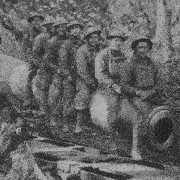|
What is the most powerful flying bug? This poll is closed. |
|||
|---|---|---|---|
| 🦋 |
|
15 | 3.71% |
| 🦇 |
|
115 | 28.47% |
| 🪰 |
|
12 | 2.97% |
| 🐦 |
|
67 | 16.58% |
| dragonfly |
|
94 | 23.27% |
| 🦟 |
|
14 | 3.47% |
| 🐝 |
|
87 | 21.53% |
| Total: | 404 votes | ||
|
Bad news for this person's dad https://twitter.com/BoltzmannBooty/status/1691874377413832857?s=20
|
|
|
|

|
| # ? May 25, 2024 22:39 |
|
DiscountDildos posted:Bad news for this person's dad when will putlers reign of terror end
|
|
|
|
DiscountDildos posted:Bad news for this person's dad Lol just say you stepped on a mine
|
|
|
|
euphronius posted:Ukrainians have generally accepted that the war necessitated restrictions to the country’s democratic institutions. I also quite enjoyed fizzy posted:But a presidential poll is scheduled for next March (assuming that the war is over by then).
|
|
|
|
 https://twitter.com/DefenceU/status/1691869111091884201?s=20 i wonder what kinda training they got
|
|
|
|
fits my needs posted:
AC-130ing brown people
|
|
|
|
DiscountDildos posted:Bad news for this person's dad Spinal tapping that rear end
|
|
|
|
You shouldn’t use your spine for loving anyone
|
|
|
|
new wunderwaffen just dropped
|
|
|
|
fits my needs posted:
lol a bit of Canadian Army trivia: Balmorals are only worn by Reservists (all the Highland Regiments are in the Reserve atm) so uh, the instructors themselves were trained one day a week, one weekend a month, one week a year. Slava. e: I do appreciate simplifying the process and having the Ramp Ceremony when the Ukrainians leave though, that's efficient.
|
|
|
|
DiscountDildos posted:Bad news for this person's dad Didn't know tantric sex retreat is a thing and a big business.
|
|
|
|
fizzy posted:Bad news for Russia - The US is priming to have Zelenskyy replaced with the immensely popular Ukrainian national military hero General Zaluzhny, who will be able to conduct the war against Russia even more effectively once he is ensconced as both the civil as well as military supreme leader. I called it. But how are the libs replace the Ukrainian leader legally without an election. Unless...
|
|
|
|
Ardennes posted:It turns out Stykers aren’t invincible looking at the latest updates. I don't know why their throwing in the 82nd in at all. It's a 'brigade' the size of a regiment with a battalion's worth of overpriced American BTRs and a company of MBTs (of course, the Western press calls it "ridiculously powerful"). It's clearly not going to tip the scales in the counteroffensive, it might as well be kept in reserve.
|
|
|
|
sum posted:I don't know why their throwing in the 82nd in at all. It's a 'brigade' the size of a regiment with a battalion's worth of overpriced American BTRs and a company of MBTs (of course, the Western press calls it "ridiculously powerful"). It's clearly not going to tip the scales in the counteroffensive, it might as well be kept in reserve. You use the tools you have not the tools you want.
|
|
|
|
stephenthinkpad posted:I called it. But how are the libs replace the Ukrainian leader legally without an election. Good news for stephenthinkpad - The US is a connoisseur of methods for the replacement of leaders. By definition, if the US does it, it's legal. https://en.wikipedia.org/wiki/United_States_involvement_in_regime_change 1846–1848 Annexation of Texas and invasion of California The United States annexed the Republic of Texas, at the time considered by Mexico to be a rebellious state of Mexico.[8] During the war with Mexico that ensued, the United States seized Alta California from Mexico.[9] 1865–1867: Mexico While the American Civil War was taking place in the United States, France and other countries invaded Mexico to collect debts. France then installed Habsburg prince Maximilian I as the Emperor of Mexico. After the Civil war ended, the United States began supporting the Liberal forces of Benito Juárez (who had been the interim President of Mexico since 1858 under the liberal Constitution of 1857 and then elected as president in 1861 before the French invasion) against the forces of Maximilian. The United States began sending and dropping arms into Mexico and many Americans fought alongside Juarez. Eventually, Juarez and the Liberals took back power and executed Maximillian I.[10][11][12] The United States opposed Maximilian and had invoked the Monroe Doctrine. William Seward said afterwards "The Monroe Doctrine, which eight years ago was merely a theory, is now an irreversible fact."[13] 1887–1889: Samoa In the 1880s, Samoa was a monarchy with two rival claimants to the throne: Malietoa Laupepa and Mata'afa Iosefo. The Samoan crisis was a confrontation between the United States, Germany and the United Kingdom from 1887 to 1889, with the powers backing rival claimants to the throne of the Samoan Islands which became the First Samoan Civil War.[14] 1893: Kingdom of Hawaii Anti-monarchs, mostly Americans, in Hawaii, engineered the overthrow of the Kingdom of Hawaii. On January 17, 1893, the native monarch, Queen Lili'uokalani, was overthrown. Hawaii was initially reconstituted as an independent republic, but the ultimate goal of the action was the annexation of the islands to the United States, which was finally accomplished with the Newlands Resolution of 1898.[15] 1899–1902: Philippines The successful Philippine Revolution saw the defeat of the Spanish Empire and the establishment of the First Philippine Republic, ending centuries of Spanish colonial rule in the archipelago. The U.S., which had allied with the revolutionaries and emerged victorious in the concurrent Spanish–American War, was "granted" the Philippines in the Treaty of Paris. Wishing to establish its own control over the country, the U.S. engaged in the Philippine–American War, the success of which saw the dissolution of the self-governing Philippine Republic and formation of an Insular Government of the Philippine Islands in 1902. The Philippines became a self-governing Commonwealth in 1935 and was granted full sovereignty by 1946. 1903–1925: Honduras In what became known as the "Banana Wars," between the end of the Spanish–American War in 1898 and the inception of the Good Neighbor Policy in 1934, the U.S. staged many military invasions and interventions in Central America and the Caribbean.[16] One of these incursions, in 1903, involved regime change rather than regime preservation. The United States Marine Corps, which most often fought these wars, developed a manual called The Strategy and Tactics of Small Wars in 1921 based on its experiences. On occasion, the Navy provided gunfire support and Army troops were also used. The United Fruit Company and Standard Fruit Company dominated Honduras' key banana export sector and associated land holdings and railways. The U.S. staged invasions and incursions of US troops in 1903 (supporting a coup by Manuel Bonilla), 1907 (supporting Bonilla against a Nicaraguan-backed coup), 1911 and 1912 (defending the regime of Miguel R. Davila from an uprising), 1919 (peacekeeping during a civil war, and installing the caretaker government of Francisco Bográn), 1920 (defending the Bográn regime from a general strike), 1924 (defending the regime of Rafael López Gutiérrez from an uprising) and 1925 (defending the elected government of Miguel Paz Barahona) to defend US interests.[17] 1906–1909: Cuba After the explosion of the USS Maine the United States declared war on Spain, starting the Spanish–American War.[18] The United States invaded and occupied Spanish-ruled Cuba in 1898. Many in the United States did not want to annex Cuba and passed the Teller Amendment, forbidding annexation. Cuba was occupied by the U.S. and run by military governor Leonard Wood during the first occupation from 1898 to 1902, after the end of the war. The Platt Amendment was passed later on outlining U.S. Cuban relations. It said the U.S. could intervene anytime against a government that was not approved, forced Cuba to accept U.S. influence, and limited Cuban abilities to make foreign relations.[19] The United States forced Cuba to accept the terms of the Platt Amendment, by putting it into their constitution.[20] After the occupation, Cuba and the U.S. would sign the Cuban–American Treaty of Relations in 1903, further agreeing to the terms of the Platt Amendment.[21] Tomás Estrada Palma became the first President of Cuba after the U.S. withdrew. He was a member of the Republican Party of Havana. He was re-elected in 1905 unopposed; however, the Liberals accused him of electoral fraud. Fighting began between the Liberals and Republicans. Due to the tensions he resigned on September 28, 1906, and his government collapsed soon afterwards. U.S. Secretary of State William Howard Taft invoked the Platt Amendment and the 1903 treaty, under approval of President Theodore Roosevelt, invading the country, and occupying it. The country would be governed by Charles Edward Magoon during the occupation. They oversaw the election of José Miguel Gómez in 1909, and afterwards withdrew from the country.[22] 1909–1910: Nicaragua Governor Juan José Estrada, member of the Conservative Party, led a revolt against President José Santos Zelaya, member of the Liberal Party reelected in 1906. This became what is known as the Estrada rebellion. The United States supported the conservative forces because Zelaya had wanted to work with Germany or Japan to build a new canal through the country. The U.S. controlled the Panama Canal and did not want competition from another country outside of the Americas. Thomas P Moffat, a US council[23] in Bluefields, Nicaragua would give overt support, in conflict with the US trying to only give covert support. Direct intervention would be pushed by the secretary of state Philander C. Knox. Two Americans were executed by Zelaya for their participation with the conservatives. Seeing an opportunity the United States became directly involved in the rebellion and sent in troops, which landed on the Mosquito Coast. On December 14, 1909 Zelaya was forced to resign under diplomatic pressure from America and fled Nicaragua. Before Zelaya fled, he along with the liberal assembly choose José Madriz to lead Nicaragua. The U.S. refused to recognize Madriz. The conservatives eventually beat back the liberals and forced Madriz to resign. Estrada then became the president. Thomas Cleland Dawson was sent as a special agent to the country and determined that any election held would bring the liberals into power, so had Estrada set up a constituent assembly to elect him instead. In August 1910 Estrada became President of Nicaragua under U.S. recognition, agreeing to certain conditions from the U.S. After the intervention, the U.S. and Nicaragua signed a treaty on June 6, 1911.[24][25][26] 1912–1933: Nicaragua The Taft administration sent troops into Nicaragua and occupied the country. When the Wilson administration came into power, they extended the stay and took complete financial and governmental control of the country, leaving a heavily armed legation. U.S. president Calvin Coolidge removed troops from the country, leaving a legation and Adolfo Diaz in charge of the country. Rebels ended up capturing the town with the legation and Diaz requested troops came back, which they did a few months after leaving. The U.S. government fought against rebels led by Augusto Cesar Sandino. Franklin D. Roosevelt pulled out because the U.S. could no longer afford to keep troops in the country due to the Great Depression. The second intervention in Nicaragua would become one of the longest wars in United States history. The United States left the Somoza family in charge, who killed Sandino in 1934.[27] 1915–1934: Haiti The U.S. occupied Haiti from 1915 to 1934. U.S.-based banks had lent money to Haiti and the banks requested U.S. government intervention. In an example of "gunboat diplomacy," the U.S. sent its navy to intimidate to get its way.[28] Eventually, in 1917, the U.S. installed a new government and dictated the terms of a new Haitian constitution of 1917 that instituted changes that included an end to the prior ban on land ownership by non-Haitians. The Cacos were originally armed militias of formerly enslaved persons who rebelled and took control of mountainous areas following the Haitian Revolution in 1804. Such groups fought a guerrilla war against the U.S. occupation in what were known as the "Caco Wars."[29] 1916–1924: Dominican Republic U.S. marines invaded the Dominican Republic and occupied it from 1916 to 1924, and this was preceded by US military interventions in 1903, 1904, and 1914. The US Navy installed its personnel in all key positions in government and controlled the Dominican military and police.[30] Within a couple of days, President Juan Isidro Jimenes resigned.[31] 1917: Costa Rica Costa Rica was the only country in Latin America that never had a long lasting authoritarian government in the 20th century. Its only dictatorship during the period was after the 1917 Costa Rican coup d'état led by Minister of War Federico Tinoco Granados[32] against President Alfredo González Flores after González attempted to increase tax on the wealthy, and it lasted only two years. The US government led by Democratic President Woodrow Wilson did not recognize Tinoco's rule and helped the opposition that quickly overthrew Tinoco after a few months of warfare.[32] 1945–1948: South Korea The Empire of Japan surrendered to the United States in August 1945, ending the Japanese rule of Korea. Under the leadership of Lyuh Woon-Hyung People's Committees throughout Korea formed to coordinate transition to Korean independence. On August 28, 1945 these committees formed the temporary national government of Korea, naming it the People's Republic of Korea (PRK) a couple of weeks later.[69][70] On September 8, 1945, the United States government landed forces in Korea and thereafter established the United States Army Military Government in Korea (USAMGK) to govern Korea south of the 38th parallel north. The USAMGK outlawed the PRK government.[71][72] In May 1948, Syngman Rhee, who had previously lived in the United States, won the 1948 South Korean presidential election, which had been boycotted by most other politicians and in which voting was limited to property owners and tax payers or, in smaller towns, to town elders voting for everyone else.[73][74] Syngman Rhee, backed by the U.S. government, set up authoritarian rule that coordinated closely with the business sector and lasted until Rhee's overthrow in 1961, which led to a similarly authoritarian regime that would last ultimately until the late 1980s.[75] 1945–1949: China The U.S. government provided military, logistical and other aid to the National Revolutionary Army led by Chiang Kai-shek's Nationalist government in its civil war against the indigenous communist People's Liberation Army (PLA) led by Mao Zedong. Both the KMT and the PLA were fighting against Japanese occupation forces, until the Japanese surrender to the United States in August 1945. This surrender brought to an end the Japanese Puppet state of Manchukuo and the Japanese-dominated Wang Jingwei regime.[76] After the Japanese surrender, the US continued to support the KMT against the PLA. The US airlifted many KMT troops from central China to Manchuria. Approximately 50,000 U.S. troops were sent to guard strategic sites in Hubei and Shandong. The U.S. trained and equipped KMT troops, and also transported Korean troops and even Imperial Japanese Army troops back to help KMT forces fight, and ultimately lose, against the People's Liberation Army.[77] President Harry Truman justified deploying the very Japanese occupying army under whose boot the Chinese people had suffered so terribly to fight against the Chinese communists in this way: "It was perfectly clear to us that if we told the Japanese to lay down their arms immediately and march to the seaboard, the entire country would be taken over by the Communists. We therefore had to take the unusual step of using the enemy as a garrison until we could airlift Chinese National troops to South China and send Marines to guard the seaports."[78] Within less than two years after the Second Sino-Japanese War, the KMT had received $4.43 billion from the United States—most of which was military aid.[77][79] 1948: Costa Rica Christian socialist medic Rafael Ángel Calderón Guardia of the National Republican Party reached power through democratic means in 1944, promoting a general social reform and allied to the Costa Rican Communist Party.[86] Tensions between government and the opposition, supported by the Central Intelligence Agency (CIA), caused the short-lived Costa Rican Civil War of 1948 that ended Calderón's government and led to the short de facto rule of 18 months by José Figueres Ferrer.[86] However, Figueres also held some left-leaning ideas and continued the process of social reform.[32] After the war, democracy was quickly restored and a two-party system encompassed by the parties of the Calderonistas and Figueristas developed in the country for nearly 60 years.[32] 1949–1953: Albania Albania was in chaos after World War II and the country was not as focused on peacetime conferences in comparison to other European nations, while having suffered high casualties.[87] It was threatened by its larger neighbors with annexation. After Yugoslavia dropped out of the Eastern Bloc, the small country of Albania was geographically isolated from the rest of the Eastern Bloc.[citation needed] The United States and United Kingdom took advantage of the situation and recruited anti-communist Albanians who had fled after the USSR invaded. The US and UK formed the Free Albania National Committee, made up of many of the emigres. Recruited Albanians were trained by the U.S. and U.K. and infiltrated the country multiple times. Eventually, the operation was found out and many of the agents fled, were executed, or were tried. The operation would become a failure. The operation was declassified in 2006, due to the Nazi War Crimes Disclosure Act and is now available in the National Archives.[88][89] 1949: Syria The government of Shukri al-Quwatli, reelected in 1948, was overthrown by a junta led by the Syrian Army chief of staff at the time, Husni al-Za'im, who became President of Syria on April 11, 1949. Za'im had extensive connections to CIA operatives,[90] although the exact nature of U.S. involvement in the coup remains highly controversial.[91][92][93] The construction of the Trans-Arabian Pipeline, which had been held up in the Syrian parliament, was approved by Za'im, the new president, just over a month after the coup.[94] 1950–1953: Burma and China The Chinese Civil War had recently ended, with the communists winning and the nationalists losing. The nationalists retreated to areas such as Taiwan and north Burma.[95] In Operation Paper, which began in late 1950[96] or early 1951 following Chinese involvement in the Korean War,[97] Operation Paper entailed CIA plans used by CIA military advisors on the ground in Burma to assist Kuomintang incursions into Western China over several years, under the command of General Li Mi, with Kuomintang leadership hoping to eventually retake China, despite opposition from the US State Department.[98] However, each attempted invasion was repelled by the Chinese army. The Kuomintang took control of large swaths of Burma, while the government of Burma complained repeatedly of the military invasion to the United Nations.[99] On secret flights from Thailand to Burma, CAT aircraft flown by pilots hired by the CIA brought American weapons and other supplies to the Kuomintang and on return flights the CAT aircraft transported opium from the Kuomintang to Chinese organized crime drug traffickers in Bangkok, Thailand.[99][100] 1952: Egypt In February 1952, following January's riots in Cairo amid widespread nationalist discontent over the continued British occupation of the Suez Canal and Egypt's defeat in the 1948 Arab–Israeli War, CIA officer Kermit Roosevelt Jr. was dispatched by the State Department to meet with Farouk I of the Kingdom of Egypt. American policy at that time was to convince Farouk to introduce reforms that would weaken the appeal of Egyptian radicals and stabilize Farouk's grip on power. The U.S. was notified in advance of the successful July coup led by nationalist and anti-communist Egyptian military officers (the "Free Officers") that replaced the Egyptian monarchy with the Republic of Egypt under the leadership of Mohamed Naguib and Gamal Abdel Nasser. CIA officer Miles Copeland Jr. recounted in his memoirs that Roosevelt helped coordinate the coup during three prior meetings with the plotters (including Nasser, the future Egyptian president); this has not been confirmed by declassified documents but is partially supported by circumstantial evidence. Roosevelt and several of the Egyptians said to have been present in these meetings denied Copeland's account; another U.S. official, William Lakeland, said its veracity is open to question. Hugh Wilford notes that "whether or not the CIA dealt directly with the Free Officers prior to their July 1952 coup, there was extensive secret American-Egyptian contact in the months after the revolution."[101][102] 1952: Guatemala Operation PBFortune, also known as Operation Fortune, was a covert United States operation to overthrow Guatemalan President Jacobo Árbenz in 1952. The operation was authorized by U.S. President Harry Truman and planned by the Central Intelligence Agency. The plan involved providing weapons to the exiled Guatemalan military officer Carlos Castillo Armas, who was to lead an invasion from Nicaragua.[103] 1952–1953: Iran Since 1944, Iran was a constitutional monarchy ruled by the Shah Mohammad Reza Pahlavi. From the discovery of oil in Iran in the late nineteenth century major powers exploited the weakness of the Iranian government to obtain concessions that many believed failed to give Iran a fair share of the profits. During World War II, the UK, the USSR and the US all became involved in Iranian affairs, including the joint Anglo-Soviet invasion of Iran in 1941. Iranian officials began to notice that British taxes were increasing while royalties to Iran declined. By 1948, Britain received substantially more revenue from the Anglo-Iranian Oil Company (AIOC) than Iran. Negotiations to meet this and other Iranian concerns exacerbated rather than eased tensions.[104] On March 15, 1951 the Majlis, the Iranian parliament, passed legislation championed by reformist politician Mohammad Mosaddegh to nationalize the AIOC. The senate approved the measure two days later. Fifteen months later, Mosadegh was elected Prime Minister by the Majlis. International business concerns then boycotted oil from the nationalized Iranian oil industry. This contributed to concerns in Britain and the US that Mosadegh might be a communist. He was reportedly supported by the Communist Tudeh Party.[105] The CIA began supporting 18 of their favorite candidates in the 1952 Iranian legislative election, which Mosaddegh suspended after urban deputies loyal to him were elected.[106] The new parliament gave Mosaddegh emergency powers which weakened the power of the Shah, and there was a constitutional struggle over the roles of the Shah and prime minister. Britain strongly backed the Shah, while the US officially remained neutral. However, America's position shifted in late 1952 with the election of Dwight D. Eisenhower as U.S. president. The CIA launched Operation Ajax, directed by Kermit Roosevelt Jr., with help from Norman Darbyshire, to remove Mosaddegh by persuading the Shah to replace him, using diplomacy and bribery. The 1953 Iranian coup d'état (known in Iran as the "28 Mordad coup")[107] was orchestrated by the intelligence agencies of the United Kingdom such as MI6 (under the name "Operation Boot") and the United States (under the name "TPAJAX Project").[108][109][110][111] The coup saw the transition of Pahlavi from a constitutional monarch to an authoritarian, who relied heavily on United States government support. That support dissipated during the Iranian Revolution of 1979, as his own security forces refused to shoot into non-violent crowds.[112] The CIA did not admit its responsibility until the 60th anniversary of the coup in August 2013.[113] 1954: Guatemala In a 1954 CIA operation code named Operation PBSuccess, the U.S. government executed a coup that successfully overthrew the government of President Jacobo Árbenz, elected in 1950, and installed Carlos Castillo Armas, the first of a line of right-wing dictators, in its place.[114][115][116] Not only was it done for the ideological purpose of containment, but the CIA had been approached by the United Fruit Company as it saw possible loss in profits due to the situation of workers in the country, i.e. the introduction of anti-exploitation laws.[117] The perceived success of the operation made it a model for future CIA operations because the CIA lied to the president of the United States when briefing him regarding the number of casualties.[118][119] 1956–1957: Syria In 1956 Operation Straggle was a failed coup plot against Nasserist civilian politician Sabri al-Asali. The CIA made plans for a coup for late October 1956 to topple the Syrian government. The plan entailed takeover by the Syrian military of key cities and border crossings.[120][121][122] The plan was postponed when Israel invaded Egypt in October 1956 and US planners thought their operation would be unsuccessful at a time when the Arab world is fighting "Israeli aggression." The operation was uncovered and American plotters had to flee the country.[123] In 1957 Operation Wappen was a second coup plan against Syria, orchestrated by the CIA's Kermit Roosevelt. It called for assassination of key senior Syrian officials, staged military incidents on the Syrian border to be blamed on Syria and then to be used as pretext for invasion by Iraqi and Jordanian troops, an intense US propaganda campaign targeting the Syrian population, and "sabotage, national conspiracies and various strong-arm activities" to be blamed on Damascus.[124][125][122][126] This operation failed when Syrian military officers paid off with millions of dollars in bribes to carry out the coup revealed the plot to Syrian intelligence. The U.S. Department of State denied accusation of a coup attempt and along with US media accused Syria of being a "satellite" of the USSR.[125][127][128] There was also a third plan in 1957, called "The Preferred Plan". Alongside Britain's MI6, the CIA planned to support and arm several uprisings. However, this plan was never carried out.[124] 1957–1959: Indonesia Starting in 1957, Eisenhower ordered the CIA to overthrow Sukarno. The CIA supported the failed Permesta Rebellion by rebel Indonesian military officers in February 1958. CIA pilots, such as Allen Lawrence Pope, piloted planes operated by CIA front organization Civil Air Transport (CAT) that bombed civilian and military targets in Indonesia. The CIA instructed CAT pilots to target commercial shipping in order to frighten foreign merchant ships away from Indonesian waters, thereby weakening the Indonesian economy and thus destabilizing the government of Indonesia. The CIA aerial bombardment resulted in the sinking of several commercial ships[129] and the bombing of a marketplace that killed many civilians.[130] Pope was shot down and captured on 18 May 1958, revealing U.S. involvement, which Eisenhower publicly denied at the time. The rebellion was ultimately defeated by 1961.[131][132] 1959: Iraq Concerned about the influence of the Iraqi Communist Party (ICP) in Brigadier Abd al-Karim Qasim's administration, President Eisenhower questioned that "it might be good policy to help [Gamal Abdel Nasser] take over in Iraq," recommending that Nasser be provided with "money and support," thus the U.S. "moved into increasingly close alignment with Egypt with regard to Qasim and Iraq."[133] After Iraq withdrew from the anti-Soviet alliance—the Baghdad Pact—the United States National Security Council (NSC) proposed various contingencies for preventing a communist takeover of the country,[134] and "soon developed a detailed plan for assisting nationalist elements committed to the overthrow of Qasim."[133] The U.S. also "approached Nasser to discuss 'parallel measures' that could be taken by the two countries against Iraq."[135] During a NSC meeting on September 24, two representatives from the State Department urged a cautious approach, while the other twelve representatives, namely from the CIA and the Department of Defense, "strong[ly] pitch[ed] for a more active policy toward Iraq." One CIA representative noted that there is a "small stockpile [of weapons] in the area," and that the CIA "could support elements in Jordan and the UAR to help Iraqis filter back to Iraq."[135] That same day, the NSC would also prepare a study which called for "covert assistance to Egyptian efforts to topple Qasim," and for "grooming political leadership for a successor government."[133] Bryan R. Gibson writes that "there is no documentation that ties the United States directly to any of Nasser's many covert attempts to overthrow the Qasim regime."[136] However, Brandon Wolfe-Hunnicutt states that the U.S. issued its "tacit support for Egyptian efforts to bring [Qasim's government] down,"[133] and Kenneth Osgood writes that "circumstantial evidence in declassified records suggests that ... [t]he United States was working with Nasser on some level, even if the precise nature of that collaboration is not known."[135] Contemporary documents pertaining to the CIA's operations in Iraq have remained classified or heavily redacted, thus "allow[ing] for plausible deniability."[137] Richard Sale of United Press International (UPI), citing former U.S. diplomat and intelligence officials, Adel Darwish, and other experts, reported that the unsuccessful October 7, 1959 assassination attempt on Qasim involving a young Saddam Hussein and other Ba'athist conspirators was a collaboration between the CIA and Egyptian intelligence.[138] Gibson has disputed Sale and Darwish's account, concluding that available declassified records show that "while the United States was aware of several plots against Qasim, it had still adhered to [a] nonintervention policy."[139] Wolfe-Hunnicutt observes that "[i]t seems more likely that it was October 7 that brought the Ba'ath to the attention of the US government."[140] On the other hand, Osgood writes that "the circumstantial evidence is such that the possibility of US–UAR collaboration with Ba'ath Party activists cannot be ruled out," concluding that: "Whatever the validity of [Sale's] charges, at the very least currently declassified documents reveal that US officials were actively considering various plots against Qasim and that the CIA was building up assets for covert operations in Iraq."[135] The assassins, including Saddam, escaped to Cairo, Egypt "where they enjoyed Nasser's protection for the remainder of Qasim's tenure in power."[141] One of the conspirators involved in the assassination attempt, Hazim Jawad, "received training from the UAR intelligence service in clandestine wireless telegraphy," before returning to Iraq in 1960 to coordinate "clandestine radio operations for the UAR." Wolfe-Hunnicutt writes that in the 1959–1960 period, during the "peak of US-UAR intelligence collaboration ... [i]t is quite possible that Jawad became familiar to US intelligence," as a 1963 State Department cable described him as "one of our boys."[142] Similarly, it is possible that Saddam visited the U.S. embassy in Cairo,[143] and some evidence suggests that he was "in frequent contact with US officials and intelligence agents."[135] A former high-ranking U.S. official told Marion Farouk–Sluglett and Peter Sluglett that Iraqi Ba'athists, including Saddam, "had made contact with the American authorities in the late 1950s and early 1960s."[144] I'm not even half-way through the page yet, wtf.
|
|
|
|
See fizzy, I don't think Z is going to be overthrown. I think Z man will be assassinated by evil Putin spies. Maybe by radiation poisoning even. Big Z will die a martyr! One Zelensky will fall but many young Zelensky will rise and follow his food step and fight back to Crimea!
|
|
|
|
sum posted:I don't know why their throwing in the 82nd in at all. It's a 'brigade' the size of a regiment with a battalion's worth of overpriced American BTRs and a company of MBTs (of course, the Western press calls it "ridiculously powerful"). It's clearly not going to tip the scales in the counteroffensive, it might as well be kept in reserve. It reminds me of Kursk. The Germans knew that the Soviets were creating a massive series of defenses. The Germans continuously delayed their offensive which gave the Soviets more time to fortify which caused the Germans to gather more forces which gave the Soviets more time to fortify. At a certain point there is a political momentum to the offensive that's difficult to stop, we must attack because we've been preparing the attack for so long. The Germans could have called off the attack and used their carefully husbanded forces as a mobile armored reserve. Guderian even advocated this course of action and if they followed his plan then the Soviets would have wasted all that effort on fortifying Kursk. Instead the Nazis decided to attack what might have been the single most fortified location in the entire world.
|
|
|
|
Committing their exploitation force to try to achieve some sort of tactical result is a sign that their offensive has failed its operational objectives. Now this is a classical problem wherein you have to ask yourself: "So why commit them at all?", and of course if you knew this you could explain many of the major military mistakes in history. Psychology of Military Incompetence notwithstanding, I think probably it's too hard to resist. e: beaten.
|
|
|
|
stephenthinkpad posted:I called it. But how are the libs replace the Ukrainian leader legally without an election. yeah i said a similar thing too but im rooting for poroshenko now. it'd be hilarious if he came back
|
|
|
|
saakashvili, ukraine needs you
|
|
|
|
stephenthinkpad posted:I called it. But how are the libs replace the Ukrainian leader legally without an election. 
|
|
|
|
BearsBearsBears posted:It reminds me of Kursk. The Germans knew that the Soviets were creating a massive series of defenses. The Germans continuously delayed their offensive which gave the Soviets more time to fortify which caused the Germans to gather more forces which gave the Soviets more time to fortify. At a certain point there is a political momentum to the offensive that's difficult to stop, we must attack because we've been preparing the attack for so long. The Germans could have called off the attack and used their carefully husbanded forces as a mobile armored reserve. Guderian even advocated this course of action and if they followed his plan then the Soviets would have wasted all that effort on fortifying Kursk. Instead the Nazis decided to attack what might have been the single most fortified location in the entire world. masters of maneuver warfare, folks
|
|
|
|
Frosted Flake posted:Committing their exploitation force to try to achieve some sort of tactical result is a sign that their offensive has failed its operational objectives. kinda want to read that, it sounds fascinating. is that a book an idiot can read and understand?
|
|
|
CODChimera posted:kinda want to read that, it sounds fascinating. is that a book an idiot can read and understand? I should fucken hope so!
|
|
|
|
|
CODChimera posted:kinda want to read that, it sounds fascinating. is that a book an idiot can read and understand? I think it's a very enjoyable and humorous read.
|
|
|
|
Frosted Flake posted:"Scranton just does the shell casing. The final assembly is in Iowa." I can't even come up with one reason why splitting those would be good beside the obvious grifting.
|
|
|
|
gotta create jobs in your district and serving the MIC is a make work program
|
|
|
|
supersnowman posted:I can't even come up with one reason why splitting those would be good beside the obvious grifting. It's only natural that tankies like yourselves don't understand the mechanisms of capitalism and how the relentless competition of a free market leads to superior cost savings and product quality.
|
|
|
|
Remember that artillery shell plants were massive complexes with 11k employees, their own rail lines, two newspapers, their own power plants etc. etc.      Popy posted:gotta create jobs in your district and serving the MIC is a make work program The town of Ajax, Ontario was the result of just one munitions plant being large enough that it started a community. Seems like a smart move to create your own district by concentrating production.
|
|
|
|
the big secret advantage to isolating production units geographically is that it reduces labor power. a lot of the mic "innovations" of the past 80 years, both in armament production and uhhh consumption, have been about reducing the leverage that organized groups of soldiers or workers can have
|
|
|
|
Working in a shell factory would be cool, especially if you got to drive the little motor train with all the little carts
|
|
|
|
Good news for Ukraine - U.S. President Joe Biden endorsed the supply of war planes https://www.reuters.com/business/aerospace-defense/ukraine-says-it-has-no-hope-using-f-16-fighter-jets-this-year-2023-08-16/ Ukraine says it has no hope of using F-16 fighter jets this year Reuters August 17, 20235:56 AM GMT+8Updated 5 hours ago KYIV, Aug 17 (Reuters) - Ukraine will not be able to operate U.S.-built F-16 fighter jets this coming autumn and winter, air force spokesperson Yuriy Ihnat told Ukrainian television late on Wednesday. "It's already obvious we won't be able to defend Ukraine with F-16 fighter jets during this autumn and winter," Ihnat told a joint telethon broadcast by Ukrainian channels. Ukraine has repeatedly called its Western allies to supply the country with F-16s, which Ukrainian President Volodymyr Zelenskiy said would be a signal that Russia's invasion would end in defeat. U.S. President Joe Biden endorsed training programmes for Ukrainian pilots on F-16s in May but no timing for the supply of war planes has been given so far. "We had big hopes for this plane, that it will become part of air defence, able to protect us from Russia's missiles and drones terrorism," Ihnat said. The West says it wants to help Ukraine defeat Russia but has repeatedly insisted it does not want to trigger a direct confrontation between the U.S.-backed NATO military alliance and Moscow.
|
|
|
|
Good news for the credibility of those who lament their forum as being genocide-tolerant - There is indeed at least one genocide-tolerant forumer amongst you.quote:I'll say the same thing I said when this was a Trump Crime(tm): We need more information. It sounds like there was a lot of poor practice going on in terms of infection control and protecting inmates and vulnerable staff from COVID. As far as the hysterectomies go, what I have heard of the whistleblower complaint (including the link you posted) is that she was concerned about perhaps a couple of dozen hysterectomies over six years (the numbers in the npr piece included "17" and "over 20" in slightly different contexts). quote:How many people called this doctor "The Uterus Collector", and who were they, and why did they call them that? quote:Yes, and I said it sounds like there were consent issues at minimum. But that could be anything from the doctor not realising they’re not communicating adequately with the patient, to the doctor deliberately peforming unnecessary hysterectomies on immigrant women of childbearing age for the purposes of genocide. We need an investigation to know what the actual problem is. quote:The doctor claims that they were engaged in normal medical practice, doing necessary hysterectomies to treat gynaecological issues. What is your evidence that they were attempting eugenics? quote:Ok, what do we know about the demographics of the population in that detention centre? The most pressing reason for hysterectomy is endometrial cancer, but it may also be suggested as a definitive treatment for persistent endometrial hyperplasia in postmenopausal women, or women who have adamantly finished having kids. The annual incidence of endometrial cancer in the US is ~1/2500. The Irwin county detention centre houses around 4600 inmates in 12 months https://trac.syr.edu/immigration/detention/201509/IRWINGA/tran/. It sounds like they're not all there for a year (average stay 23 days for those being transferred), but if they have a medical checkup during that time then it's possible that previously unattended issues are getting picked up, if they were previously living as undocumented migrants with poor access to healthcare. quote:This is an interesting strategic fork you've imposed. You're forcing people to either allow your diminution of the Nazis' deliberate slaughter using a lethal metabolic poison, or else mount an argument that the suffering of immigrants in camps exposed to a corrosive and irritant disinfectant is not the same as that, which makes your opponents look like they don't care about the suffering of immigrants. Obviously chemicals shouldn't be used in a way that inflicts suffering on immigrants in camps. Done deliberately it's an atrocity. Done carelessly it's a negligent assault on their bodies and their rights. Also obviously deliberately murdering people en masse with cyanide inhalation is even worse than that. quote:You equated the deliberate murder of over 1 million people at a cellular level using a metabolic poison with the malicious or negligent infliction of chemical irritation and/or burns on unfairly detained migrants. Both things share the property of being wrong. My question is are you going to accept that those two things, in spite of the shared property of being wrong, are different? You seem to have taken umbrage at me saying you diminished the holocaust, and yet by asking the difference between two crimes of vastly different scales you did diminish the holocaust.
|
|
|
|
fizzy posted:Good news for the credibility of those who lament their forum as being genocide-tolerant - There is indeed at least one genocide-tolerant forumer amongst you. Good news for the credibility of those who lament their forum as being genocide-tolerant - There are indeed at least two genocide-tolerant forumers amongst you. quote:Any time someone compares the Iraq War and the Ukraine war just remind them that we (the US) were the Russians in that war. We invaded a sovereign nation under false pretenses and the locals fought back. We had no right to be there, and we were most definitely not welcome there. We didn't go full genocide on them, but there were atrocities galore.
|
|
|
|
fizzy posted:Good news for the credibility of those who lament their forum as being genocide-tolerant - There are indeed at least two genocide-tolerant forumers amongst you. Good news for the credibility of those who lament their forum as being genocide-tolerant - There are indeed at least three genocide-tolerant forumers amongst you. quote:* I need to post of the (hopefully) obvious disclaimer that the actions of the US military in Iraq and Russia's in Ukraine are not morally comparable...Russia has committed far, far grosser acts of turpitude in Ukraine (which just makes the tankies-as-neocons phenomenon even more hilarious). Including, yes, genocide as defined under international law. quote:Got my last edit in a minute too late it seems--yes, the mass-abduction of children is something the US did not do.
|
|
|
|
fizzy posted:Even before the counteroffensive began, Ukraine had lost some 100,000 soldiers, according to US General Mark Milley. The reality could be even worse given Western media has generally created the impression that Ukraine is “winning”, even though more than five million Ukrainians have emigrated, the nation’s infrastructure has been crippled and more than 20 per cent of its territory is occupied. lmfao
|
|
|
|
lol
|
|
|
|
lol
|
|
|
|
supersnowman posted:I can't even come up with one reason why splitting those would be good beside the obvious grifting. makes it harder to cancel government funding for the MIC when you can make attack ads about job losses against more politicians so yeah
|
|
|
|

|
| # ? May 25, 2024 22:39 |
|
fizzy posted:Good news for stephenthinkpad - The US is a connoisseur of methods for the replacement of leaders. By definition, if the US does it, it's legal. Good news for regimes changed by the United States - When the United States does it, it's a sparkling whoopsie-doodle borne out of over-zealous application of good intentions.
|
|
|



































